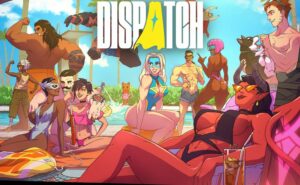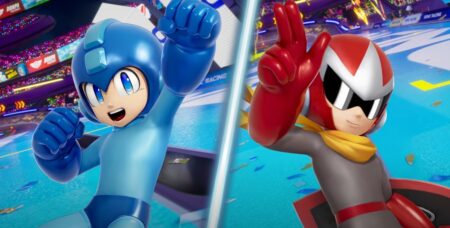Two Point Studios is back, and this time, they’re trading stethoscopes and lecture halls for ropes and priceless artifacts! Having spent some hands-on time with Two Point Museum, I can confidently say the team has truly outdone themselves, packing in an astounding array of options right from the base game. Before its highly anticipated launch, I had the pleasure of talking with Two Point Studios’ Design Director Ben Huskins, and Lead Designer Luke Finlay-Maxwell to delve into the captivating world of Two Point Museum.
Challenges Unearthed, Two Point Museum’s Expedition System
Kicking off the conversation, I was eager to uncover the biggest challenges in bringing Two Point Museum to life. Remembering the trials of Two Point Campus development amidst the pandemic, I asked about the unique challenges faced this time around.
“Yeah, I mean, I think probably… one of the big new features that’s really at the heart of this game is the expedition system,” Ben Huskins began, highlighting a core element of the Museum experience. It became clear early on that this feature was important, requiring significant development and refinement. “We built into the plan right from the start, lots of iteration time on the expedition system.”
The expedition system, a key mechanic where players send teams to unearth new exhibits, underwent a remarkable evolution. Ben revealed they are currently on “version 15” of the system, showcasing their dedication to perfecting this feature. Early iterations were incredibly basic, a simple button click and a progress bar leading to a magically appearing exhibit. However, the ambition grew.
“We even at one point… were considering things like, would you actually follow them off on the expedition and, you know, be managing a team of staff in a 3D space off on an expedition?” Ben shared, illustrating the initial expansive ideas. Ultimately, the focus shifted back to the core museum management gameplay. The team integrated the expedition system, creating a symbiotic relationship between museum operations and off-site adventures.
Preparation became crucial for expeditions, especially as players ventured into more dangerous locations. Strategic decisions like staff selection and cargo management add depth. Furthermore, staff skills honed within the museum directly impact expedition success, creating a tangible link between the two gameplay layers. The risks are real, too. Expedition teams might return with injuries, illnesses, or even supernatural curses, adding intriguing consequences to museum management. As Ben simply put it, “…that felt like a really nice way to tie the two sides of the game together as well.”
Reimagining Progression, Saying Goodbye to the Three-Star Sprint
Luke Finlay-Maxwell chimed in, highlighting another significant evolution: the career structure. The traditional star system, familiar from previous Two Point titles, felt inadequate for Museum. “If you’d spent ages getting this amazing dinosaur skeleton and then you’re never going to see it again. Then you’re not really getting attached to these exhibits,” Luke explained, pointing to the emotional connection players form with their museum collections.
This realization led to a significant shift. Two Point Museum encourages players to revisit and expand their museums over time. “You’re now looping back on museums that you’ve been to before, and you’re kind of expanding them,” Luke elaborated. This new approach presented unique design challenges, particularly in re-onboarding players returning to previously built museums.
Accessibility, a hallmark of Two Point games, remained paramount. The team focused on intuitive design, incorporating loading screen text and objectives to guide returning players smoothly. The goal was to ensure players felt immediately re-engaged, ready to appreciate their existing exhibits and expand into new themes like botany or science. “You can just go right. Yeah, there’s my amazing dinosaur skeleton I found. I’m glad I’m coming to see him again. I’m now going to expand out into other things,” Luke summarized, capturing the intended player experience.
Building on Community Feedback and Long-Awaited Features
As the third installment in the Two Point series, Museum benefits immensely from the lessons learned from Two Point Hospital and Two Point Campus. Community feedback has been a driving force, with Two Point Studios consistently delivering free updates and quality-of-life improvements post-release.
Ben highlighted the integration of past aspirations and community requests. “What are the things that we can finally do that we’d never got around to doing in Hospital and Campus?” became a central question during Museum’s development.

A good example is the introduction of staff zoning. “Something we’ve tried to do in both Hospital and Campus was have a staff zoning system,” Ben revealed. This feature, allowing players to assign staff to specific museum zones, was a long-held ambition finally realized in Museum. Players can now strategically manage their staff, dedicating security guards to botany exhibits or science sections, offering a new layer of strategic depth, especially in larger, more complex museums.
Beyond specific features, Two Point Museum embodies a culmination of experience. From menu intuitiveness to gamepad and mouse/keyboard controls, every aspect has been refined based on internal learnings and player feedback. “Museum is… that culmination of everything that we’ve learned from the previous games,” Ben affirmed.
Modding at Launch, Encouraging Player Creativity
Responding to the vibrant modding community surrounding Two Point games, Ben delivered exciting news: “We will have modding in from release actually.” This is a significant step forward, as modding was added post-release for Two Point Campus.
Two Point Museum will feature Steam Workshop support from day one, allowing players to create custom decorative items, wallpapers, and more. “This is the sort of game where we want people to be really creative,” Ben emphasized. The focus on personalization and customization is deeply ingrained in Museum, with features like color pickers enhancing player agency. Modding support is seen as a natural extension of this creative ethos, promising a wealth of unique museum designs.
Looking ahead, Two Point Studios is eager to see how players utilize modding tools and is open to expanding modding support post-release based on community activity and demand.
Post-Launch Plans, Expanding the Museum World
While specific dates remain under wraps, Ben confirmed the team’s commitment to ongoing updates, including quality-of-life improvements and new content.
“There’s definitely potential for adding new points of interest to maps and things like that,” Ben hinted, suggesting possibilities for expanding the game world and adding new discoveries. The focus remains on allowing players to enhance their existing museums. Future updates may include “more tools to make their existing museums as awesome as possible,” and new items to populate those museums.
Community feedback will again play a crucial role in shaping post-launch development, with the team keen to understand player desires for new management controls and customization options.
Guest Dynamics, A Shift in Focus
There’s a fascinating shift in guest behavior. Unlike Hospital and Campus, where efficiency was key, Museum encourages players to cultivate a lingering guest experience. “Here in Museum, you try your very best to make people stay for as long as possible and then to fulfill their curiosity for knowledge,” I observed.
Ben confirmed this design shift. “It’s like the opposite of Hospital where Hospital you’re trying to get the patients through as fast as possible. Whereas now you’re trying to get those guests to stay as long as possible.” This fundamental change in objective creates a distinctly different gameplay feel, despite the shared foundation of a people-flowing simulation.
A Message to Campus Skeptics: Why Museum is a Must-Play
Addressing players who might have been on the fence after Two Point Campus, Ben made a compelling case for Two Point Museum. “Museum is our best game that we’ve made,” Ben declared confidently, reiterating its status as a culmination of lessons learned.
Museum offers significantly greater creative freedom compared to its predecessors. The museum setting itself is inherently more conducive to customization than a university campus. “It really is much more meaningful in Museum, that creative freedom because the whole game is about crafting this guest experience,” Ben explained.
Building is also more freeform, moving away from the room-based constraints of Hospital and Campus. Partition walls at various angles allow for truly unique and less grid-like museum layouts. Ben expressed excitement to see the diverse museums players will create and share.
Management depth has also been significantly enhanced in response to Campus feedback. Luke highlighted the expanded management controls, including staff zoning and price tweaking, allowing for deeper strategic experimentation. “We’ve pushed the management aspect, you know, further than we have before,” Luke affirmed.
Two Point Museum is positioned as a less linear and more systemic experience, reacting dynamically to player choices. The game encourages players to embrace their creativity and shape their museums according to their vision. Decoration is no longer just aesthetic; it’s deeply intertwined with exhibit appeal and guest satisfaction. “Decoration is a huge part on exhibits and bars and what guests think and making that a more meaningful part of the game flow,” Luke emphasized.
Two Point Museum will be launching on March 5, 2025, on PC, PlayStation® 5, and
Microsoft® Xbox Series X|S with pre-orders now available on all platforms.
Purchase the digital Explorer Edition to receive five days advanced access to the game
starting today! (Feb. 28th)
Pre-ordering Two Point Museum unlocks access to a spectacular Sonic-themed collection of items including Sonic and Shadow staff outfits, guest gift shop outfits, and plushies for museum guests to purchase. Bonus museum customization options will also feature Sonic wallpaper, flooring, and decorative statues. Watch the Pre-Order Trailer here:










